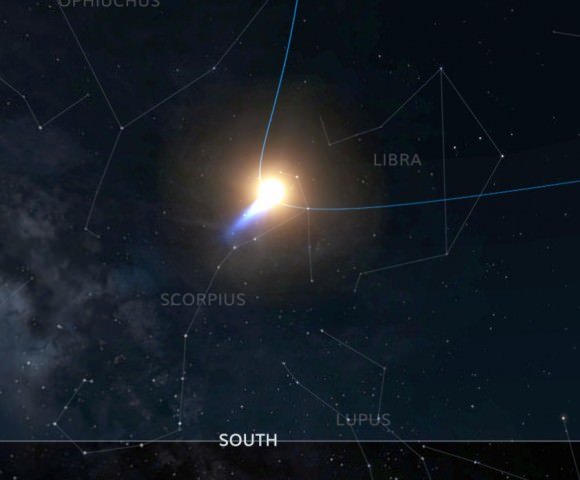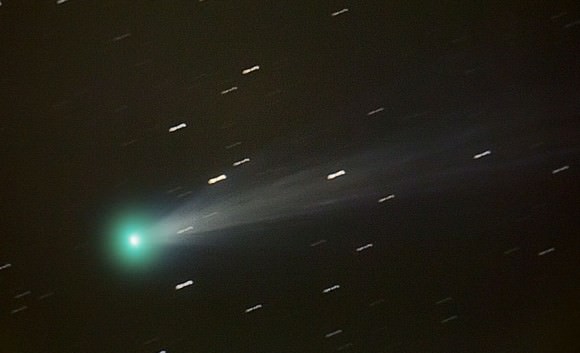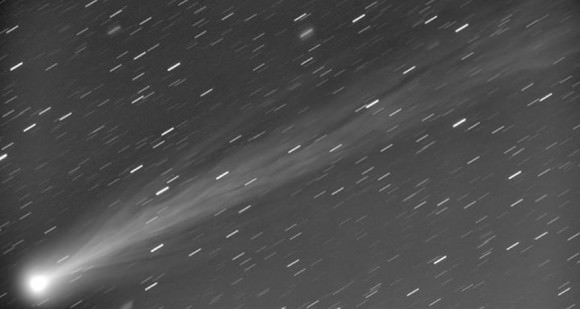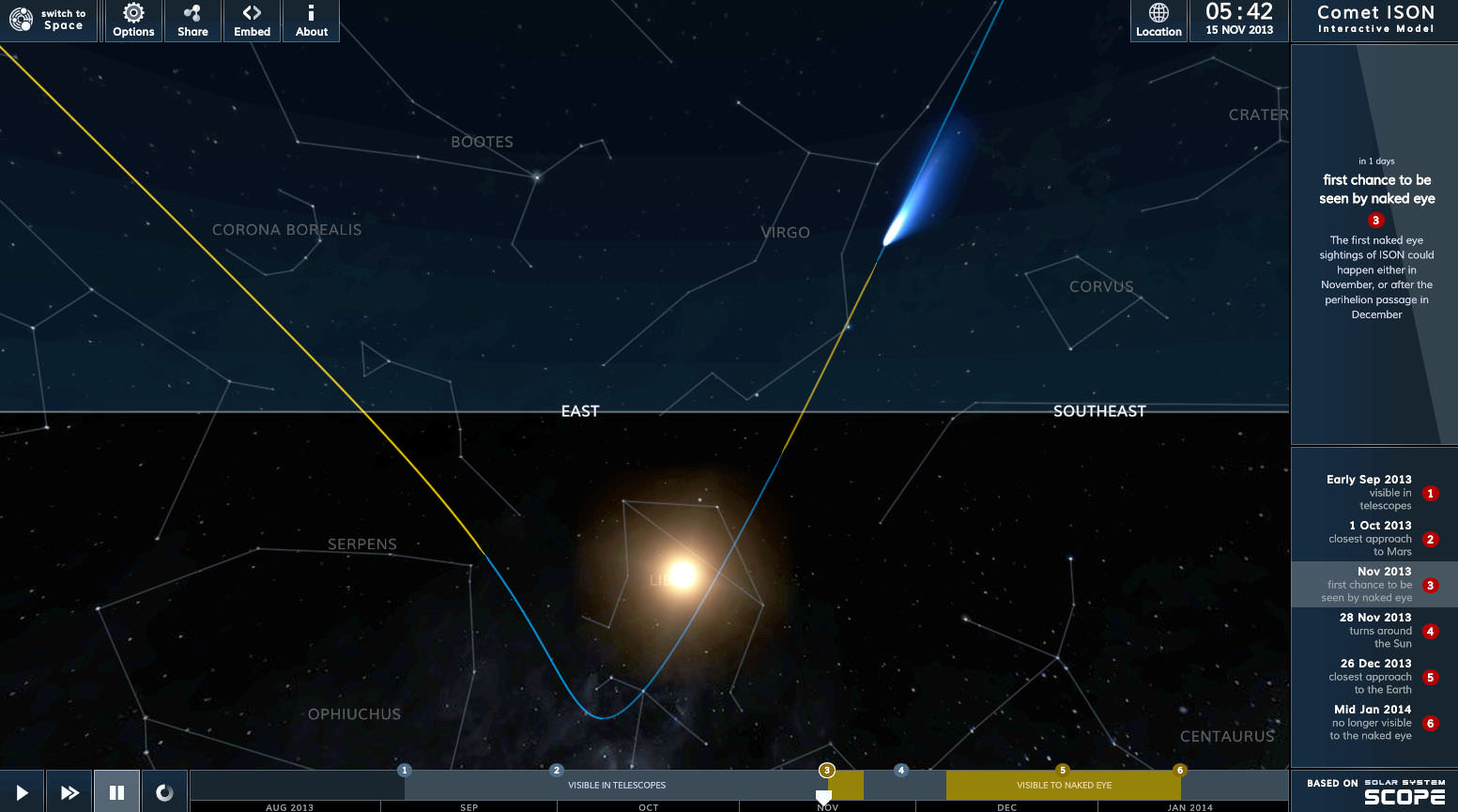Here’s a handy tool. The folks at INOVE Space Models have just updated their awesome Comet ISON flyby simulation with a second point of view – how it looks from Earth. The first version let us watch from afar as ISON dives across across the solar system until it makes a hard left at the sun and returns to deep space. The new view lets you watch it track across the sky across from any location on Earth. Go to the link and toggle the Switch to Earth option in the upper left of the display and you’re off. The website attempts to automatically pinpoint where you are, but for me it was a tad off, selecting a town about 75 miles away. But a few miles this way or that make little difference given how far the comet is from Earth. If you need to make an adjustment, click the Location icon (upper right) and select your latitude and longitude.

You have two options for viewing. If you click the single arrow play button at the bottom of the screen, the display shows a horizon line with the stars, sun and comet rising and setting over a single day. In a day’s time the comet moves only a small distance in the sky, so it will appear in nearly the same spot the next day. Except around perihelion on Nov. 28. Then it moves so quickly – over 800,000 mph (1.3 million km) – fast enough to watch move hour by hour.
Besides just being plain cool to watch, the simulator is truly useful. The background star field shows constellation outlines and stars down to about 5th magnitude. Assuming the comet is reasonably bright, say 5th magnitude or brighter, you can use the simulations as locator maps now through the end of January. By clicking on the Time Box at upper right, you can set it to any time you like, grab a frame and head outside for a look.

Pressing the double arrow fast-forward button shows changes in position one day after another. To know what day you’re on just consult the timeline at the bottom of your screen. You can manually pull the time arrow to speed up, slow down or select a particular time of month. Other refinements are available in the Options box at upper left. Should you tire with Comet ISON from an earthly perspective, just click on Switch to Space at upper left and you’ll zoom back out for a solar system perspective. Enjoy the journey!

The un-simulated Comet ISON underwent a powerful outburst on Nov. 14 brightening by two magnitudes, as the two images here from Leonid Elenin and Scott MacNeil attest (and you can see more in our article from yesterday)
What had been a faint object in binoculars has become much more impressive. I caught it in my 10x50s in some small cracks between the clouds this morning (Nov. 15) and estimated its magnitude at 5.0. Had it been clear, I would have seen it with the naked eye. Through a 15-inch (37 cm) telescope at 64x the coma, now twice its pre-outburst diameter, glowed more blue than green with a dense core that looked like a bright, fuzzy star. Frankly, ISON was beautiful. Let’s hope this little outburst leads to better things to come and not early signs of the comet’s dissolution. Take a look yourself at the next opportunity and there might be a surprise waiting for you.

